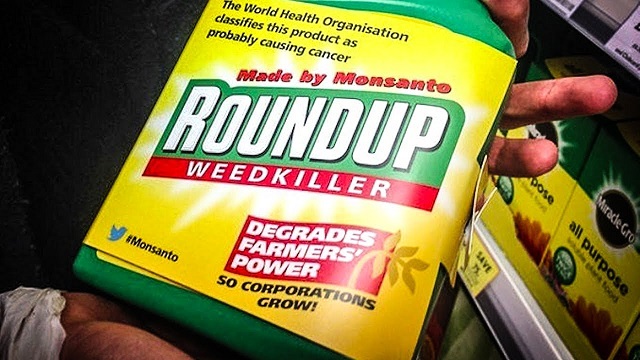
San Francisco, United States | AFP | After finding that exposure to the weedkiller Roundup was a “substantial factor” in one man’s cancer, jurors in California must now grapple with the question of just how culpable the product’s manufacturer, agriculture giant Monsanto, was in his illness.
“It’s not a popularity contest,” the company’s lawyer told the jury Wednesday as phase two of the trial began, or a question of “do you like Monsanto or not.”
But instead, the jurors must answer two questions posed to them by federal district judge Vince Chhabria: “Is Monsanto liable for Edwin Hardeman’s injuries?” and “If Monsanto is liable, what are the damages?”
Hardeman is the 70-year-old man at the center of the case who says his 25-year use of Roundup, whose principal ingredient is controversial chemical glyphosate, contributed to his non-Hodgkins lymphoma diagnosis.
The jury in San Francisco will now examine how much Monsanto knew about Roundup’s possible risks, if they tried to hide those risks and whether the product’s cans should have carried a warning.
Tuesday’s verdict was the second time in less than a year that an American jury ruled the product a carcinogen, and the news saw Monsanto owner Bayer’s stock plunge, bringing Germany’s DAX index down with it.
– Influenced regulators? –
Monsanto lawyer Brian Stekloff repeated the company’s position that multiple studies have shown the weedkiller to be safe when used properly, citing research conducted between its market debut in the mid-1970s and 2012, when Hardeman stopped using it.
In addition, he pointed out, the US Environmental Protection Agency has not suspended the product nor required safety warnings “under multiple administrations.”
But Hardeman’s lawyers say Monsanto knowingly hid Roundup’s cancer-causing properties.
“Monsanto influenced and manipulated the science” in dismissing certain results to regulators or in paying scientists to sign off on papers written directly by the company, lawyer Aimee Wagstaff said.
The EPA’s approval of Roundup was based on one “invalid,” unrepeated study, she said, and “they rely solely on information provided by the company.”
Wagstaff said that if her client, who was diagnosed with non-Hodgkins lymphoma in 2015 and sued Monsanto last year, had seen a label warning of Roundup’s health risks, “he never would have used it.”
“The cancer affected every single aspect of his life,” she said. “He wakes up every single morning wondering if the lump is back.”
Hardeman’s illness is currently in remission.
If found responsible, Bayer could be on the hook for huge compensatory damage and punitive damage payments as outlined by the US judicial system — and they are facing more than 11,000 similar trials in the US alone.
The company was ordered to pay $289 million to a terminally ill gardener in August before a judge reduced the amount to $78.5 million dollars, a ruling Bayer has appealed.
The World Health Organization’s International Agency for Research on Cancer found in 2015 that glyphosate is “probably carcinogenic,” though the European Food Safety Authority and the European Chemicals Agency have not issued similar judgments.
 The Independent Uganda: You get the Truth we Pay the Price
The Independent Uganda: You get the Truth we Pay the Price



